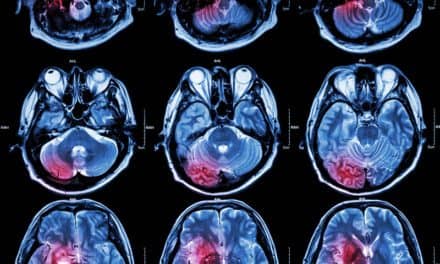A recent study indicates that oxygen levels in the placenta, particularly in the final trimester of fetal development, significantly influence cortical growth—the outer layer of the brain—and may serve as a predictor for childhood cognitive and behavioral outcomes.
“Many factors can disrupt healthy brain development in utero, and this study demonstrates the placenta is a crucial mediator between maternal health and fetal brain health,” says Emma Duerden, PhD, Canada Research Chair in Neuroscience & Learning Disorders at Western University, Lawson Health Research Institute scientist and senior author of the study.
The connection between placental health and childhood cognition was demonstrated in previous research using ultrasound, but for this study, Duerden, research scientist Emily Nichols, PhD, and an interdisciplinary team of Western and Lawson researchers used MRI, a far superior and more holistic imaging technique. This novel approach to imaging placental growth allows researchers to study neurodevelopmental disorders very early on in life, which could lead to the development of therapies and treatments.
“While ultrasound provides some measure of placental function, it is imprecise and prone to error, so MRI is just a bit more specific and precise,” says Nichols, lead author of the study. “You wouldn’t use MRI necessarily to diagnose placental growth restriction, you would use ultrasound, but MRI gives us a much better way to understand the mechanisms of the placenta and how placental function is affecting the fetal brain.”
What’s more, Nichols says, “Anything a fetus needs to grow and thrive is mostly delivered through the placenta so if there is anything wrong with the placenta, the fetus might not be receiving the nutrients or the levels of oxygenation it needs to thrive.”
Poor nutrition, smoking, cocaine use, chronic hypertension, anemia, and diabetes may result in fetal growth restriction and may cause problems for the development of the placenta. Fetal growth restriction is relatively common and happens in about 6% of all pregnancies and globally impacts 30 million pregnancies each year.
“There can be many issues related to the healthy development of the placenta,” says Duerden. “If it does not develop properly, the fetal brain may not get enough oxygen and nutrients, which may affect childhood cognition and behavior.”
Impact, Affect and Change
The study revealed that a healthy placenta in the third trimester particularly impacts the cortex and the prefrontal cortex, regions of the child’s brain that are important for learning and memory.
“An unhealthy placenta can place babies at risk for later life learning difficulties, or even something more serious, like a neurodevelopmental disorder,” says Duerden. “This research can open a lot of doors as we still don’t really understand everything there is to know about the placenta. We are just scratching the surface.”
Oxygenation levels in the placenta during the third trimester are linked to fetal cortical growth but may not impact subcortical maturation, including deep gray and white matter structures of the brain. Factors affecting the placenta in the second trimester could have a greater influence on subcortical structures responsible for children’s temperament and motor functions, such as the amygdala and basal ganglia.
“We now have a better understanding of how the placenta affects the cortex. With this basic knowledge, we now have an idea of how these two things are related and we can identify or benchmark healthy levels that lead to brain cortical growth,” says Nichols. “The subcortical regions of the brain appear to be unaffected by placental growth, at least in the healthy samples from our study.”
Nichols, Duerden, and the team scanned pregnant women twice (during their third trimester) for the study at Western’s Translational Imaging Research Facility.
“This is one of the few datasets in the world where there are two scans collected in utero during the third trimester. There are not many groups in the world doing fetal MRI, so it is a super-rich data set that allows us to look at growth over time,” says Duerden. “Western is probably one of the few places where we can do the research because we have the expertise and the facilities to do it.”






